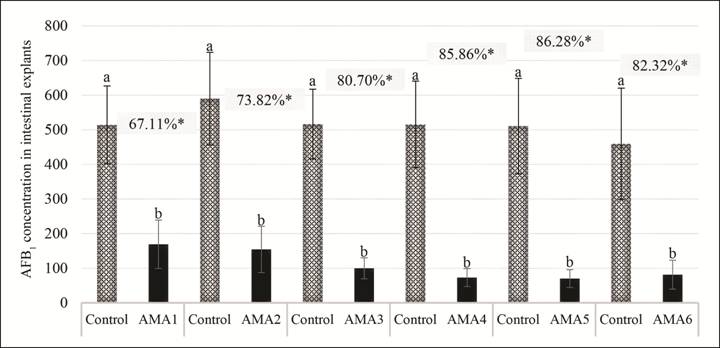ABSTRACT:
In vitro tests are performed to evaluate the efficacy of antimycotoxins additives (AMAs); nevertheless, such assays show a low correlation with in vivo trials, which are also required to determine AMAs’ efficacy. In search of an alternative method, the current study investigated the use of an ex vivo technique. Six AMAs (AMA1 to AMA6) had their ability to reduce intestinal absorption of aflatoxin B1 (AFB1) evaluated. Jejunal explants were obtained from broilers and subjected to two treatments per AMA in Ussing chambers: T1 (control) - 2.8 mg/L AFB1, and T2 - 2.8 mg/L AFB1 + 0.5% AMA. AMAs were also tested in vitro to assess adsorption of AFB1 in artificial intestinal fluid. In the ex vivo studies, AMA1 to AMA6 decreased intestinal absorption of AFB1 by 67.11%, 73.82%, 80.70%, 85.86%, 86.28% and 82.32%, respectively. As for the in vitro results, AMA1 to AMA6 presented an adsorption of 99.72%, 99.37%, 99.67%, 99.53%, 99.04% and 99.15%, respectively. The evaluated ex vivo model proved useful in the assessment of AMAs. No correlation was reported between ex vivo and in vitro findings. Further studies are needed to elucidate the correlation between ex vivo and in vivo results seeking to reduce animal testing.
Key words:
intestinal explant; Ussing chamber; broiler; aflatoxin B1; mycotoxin binder

 Thumbnail
Thumbnail
 Thumbnail
Thumbnail
 Thumbnail
Thumbnail


